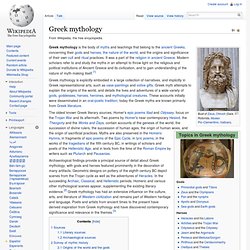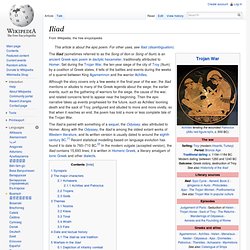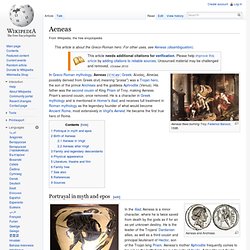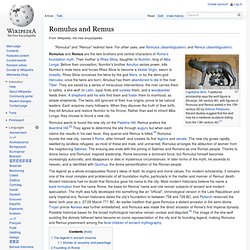

Mythology Guide - A dictionary of Greek and Roman Myths. Greek mythology. Greek mythology is explicitly embodied in a large collection of narratives, and implicitly in Greek representational arts, such as vase-paintings and votive gifts.

Greek myth attempts to explain the origins of the world, and details the lives and adventures of a wide variety of gods, goddesses, heroes, heroines, and mythological creatures. These accounts initially were disseminated in an oral-poetic tradition; today the Greek myths are known primarily from Greek literature. Archaeological findings provide a principal source of detail about Greek mythology, with gods and heroes featured prominently in the decoration of many artifacts.
Geometric designs on pottery of the eighth century BC depict scenes from the Trojan cycle as well as the adventures of Heracles. Sources Literary sources The poetry of the Hellenistic and Roman ages was primarily composed as a literary rather than cultic exercise. Archaeological sources Survey of mythic history.
THEOI GREEK MYTHOLOGY, Exploring Mythology & the Greek Gods in C. Iliad. The Iliad (sometimes referred to as the Song of Ilion or Song of Ilium) is an ancient Greek epic poem in dactylic hexameter, traditionally attributed to Homer.

The Labyrinth of Crete, the myth of the Minotaur. Zeus, in the form of a bull, brought Europe from the Phoenician seashore to Gortys in Crete where he made love with her under a plane tree (or on the plane tree after assuming the form of another sacred animal, the eagle), since then the plane tree was blessed to never lose its leaves (evergreen).

From their union three sons were born triplets (or two twins). Next, Zeus arranged the marriage of Europe to the Cretan King Asterion (or Asterio), who appointed Europe's and Zeus' sons as his successors. -> Read more about Gortys -> Read more about the Abduction of Europe by Zeus. Odyssey. Greek text of the Odyssey's opening passage The Odyssey (Greek: Ὀδύσσεια, Odýsseia) is one of two major ancient Greek epic poems attributed to Homer.

Roman mythology. Roman mythology is the body of traditional stories pertaining to ancient Rome's legendary origins and religious system, as represented in the literature and visual arts of the Romans.

"Roman mythology" may also refer to the modern study of these representations, and to the subject matter as represented in the literature and art of other cultures in any period. The Romans usually treated their traditional narratives as historical, even when these have miraculous or supernatural elements. The stories are often concerned with politics and morality, and how an individual's personal integrity relates to his or her responsibility to the community or Roman state. Heroism is an important theme. When the stories illuminate Roman religious practices, they are more concerned with ritual, augury, and institutions than with theology or cosmogony.[1] The nature of Roman myth[edit] Founding myths[edit] Other myths[edit] Mucius Scaevola in the Presence of Lars Porsenna (early 1640s) by Matthias Stom.
Aeneas. In Greco-Roman mythology, Aeneas (/ɪˈniːəs/; Greek: Αἰνείας, Aineías, possibly derived from Greek αἰνή meaning "praise") was a Trojan hero, the son of the prince Anchises and the goddess Aphrodite (Venus).

His father was the second cousin of King Priam of Troy, making Aeneas Priam's second cousin, once removed. He is a character in Greek mythology and is mentioned in Homer's Iliad, and receives full treatment in Roman mythology as the legendary founder of what would become Ancient Rome, most extensively in Virgil's Aeneid. He became the first true hero of Rome. Portrayal in myth and epos[edit] Aeneas and Anchises In the Iliad, Aeneas is a minor character, where he is twice saved from death by the gods as if for an as-yet unknown destiny.
Birth of Aeneas[edit] Romulus and Remus. Capitoline Wolf.

Traditional scholarship says the wolf-figure is Etruscan, 5th century BC, with figures of Romulus and Remus added in the 15th century AD by Antonio Pollaiuolo. Recent studies suggest that the wolf may be a medieval sculpture dating from the 13th century AD.[1] Romulus wants to found the new city on the Palatine Hill; Remus prefers the Aventine Hill.[2] They agree to determine the site through augury but when each claims the results in his own favor, they quarrel and Remus is killed.[3] Romulus founds the new city, names it Rome, after himself, and creates its first legions and senate.